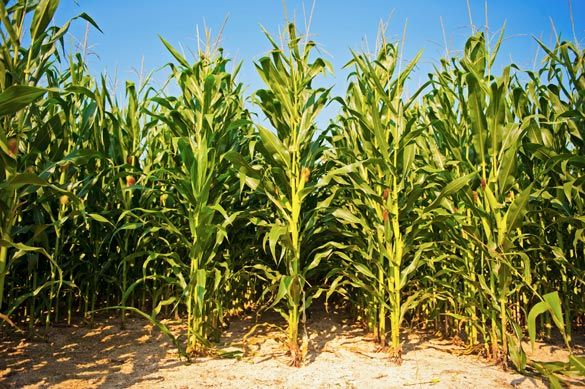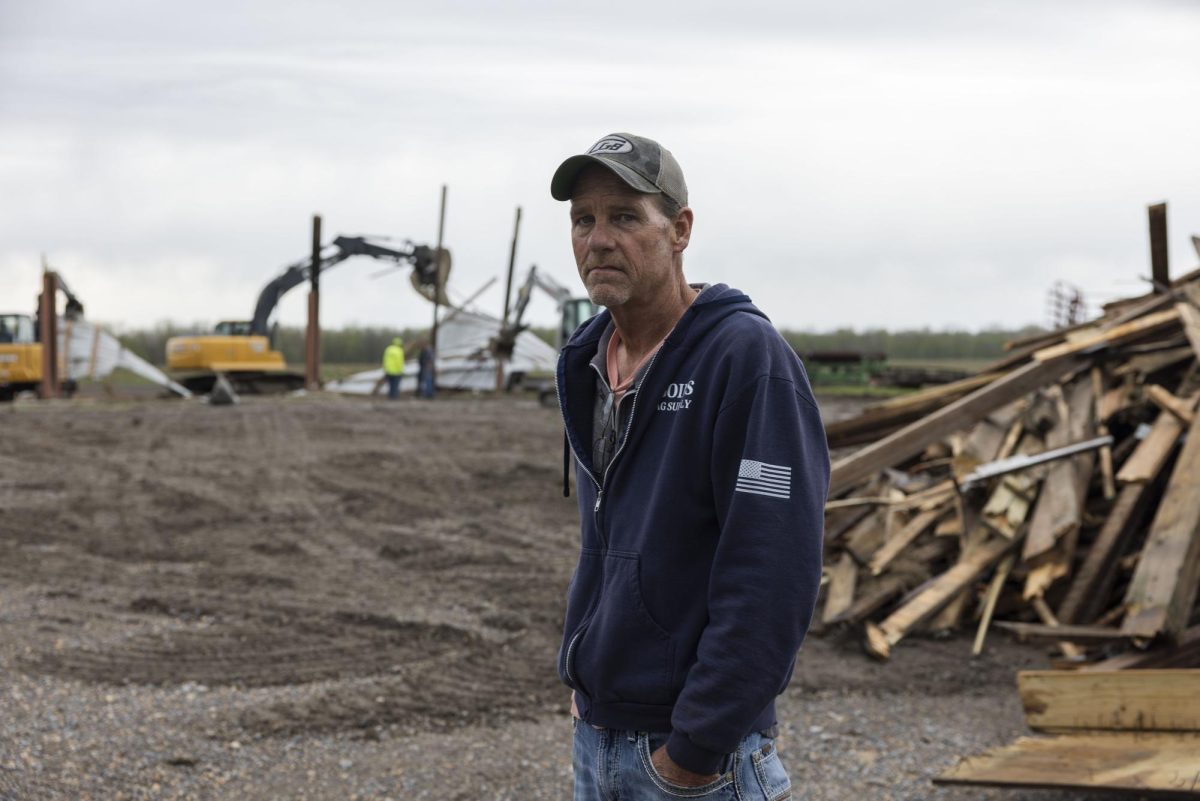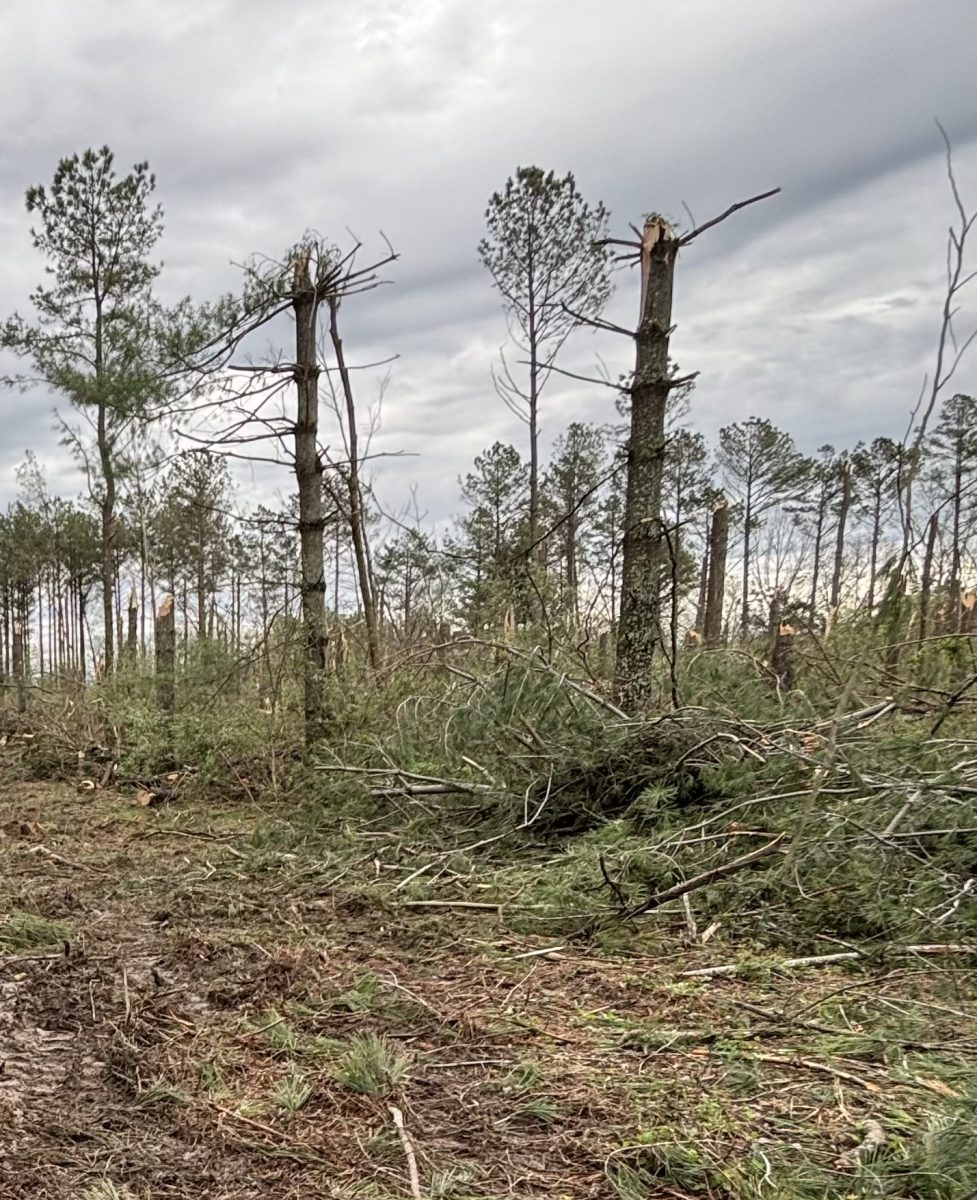Change in weather produces change in crops

August 22, 2013
The southern Illinois’ corn crop looks much better than last year, when drought gripped the region.
Over the years, Illinois has experienced several droughts. According to the Illinois State Water Survey, the most memorable happened in the 1930s, 1950s, 1988, 2007 and 2012.
This summer’s crops have no
Advertisement
t been affected by drought, but have been affected by large volumes of rain. Ted Ballard, a graduate student from Greenfield studying plant soil and agricultural systems said the crops were planted late this year because of the absence of rain.
Normally crops are planted around April, but this year, the rain caused a delay until late May and early June, Ballard said. But despite the delay, the crops look good.
“Knee high by Fourth of July is actually the old method of doing it,” Ballard said.
Ballard said the saying is no longer is what farmers look for. A few generations back, farmers were planting their crops around the time they were planted this year, but a normal year, should have tassels on the corn by the Fourth.
“It’s looking like we’re gonna have a great yield this year compared to last year,” Ballard said.
All of Illinois was greatly affected by the drought last summer, showing low harvests across the state. Ballard said some farms in Greenville ended up with extremely low yields, of about four; an average yield in southern Illinois is about 150.
Yields, measured bushels per acre, can be estimated by peeling an ear of corn back the husks, and counting the kernels. Kernels are counted in one line laterally, and then one line around the middle of the ear. Those numbers are then multiplied. Then, the counter must know about how many plants are on each acre, SIU’s corn fields hold about 28,000 plants an acre, in this case, a counter would use the number 28. The sum is then divided by 90, giving the prediction of the yield.
Advertisement*
The lack of rain was not the only thing that damaged crops last year. Ballard said the high heat in 2012 caused a lack in pollination, meaning many of the kernels did not grow. This year, with the cooler than normal weather and timely rain, the corn was properly pollinated, and Ballard said we may see higher yields than in the past.
Daniel Suess a junior from Greenville studying agriculture business economics, lives on a 2,000 acre grain farm that produces corn and soybeans. Suess said that even when areas around his farm would get rain, his farm still barely got any.
“We had corn that was pretty much just wilting and dying,” Suess said.
Suess said in some spots, the yield was as low as 40 with an average of about 90. Suess said the average yield in the Greenville area is around 160 to 170.
Suess’ farm does not use forms of irrigation. He said that irrigation is too much of an investment for the size of his farm.
“We didn’t have any irrigation or anything, so really when you have a drought like this there’s not a whole lot you can do other than sit and pray for rain,” Suess said.
Suess said he usually plants his crops in March, but had to wait until the middle of May to plant this year. Suess expects his yield to be average or above average this year.
Advertisement








